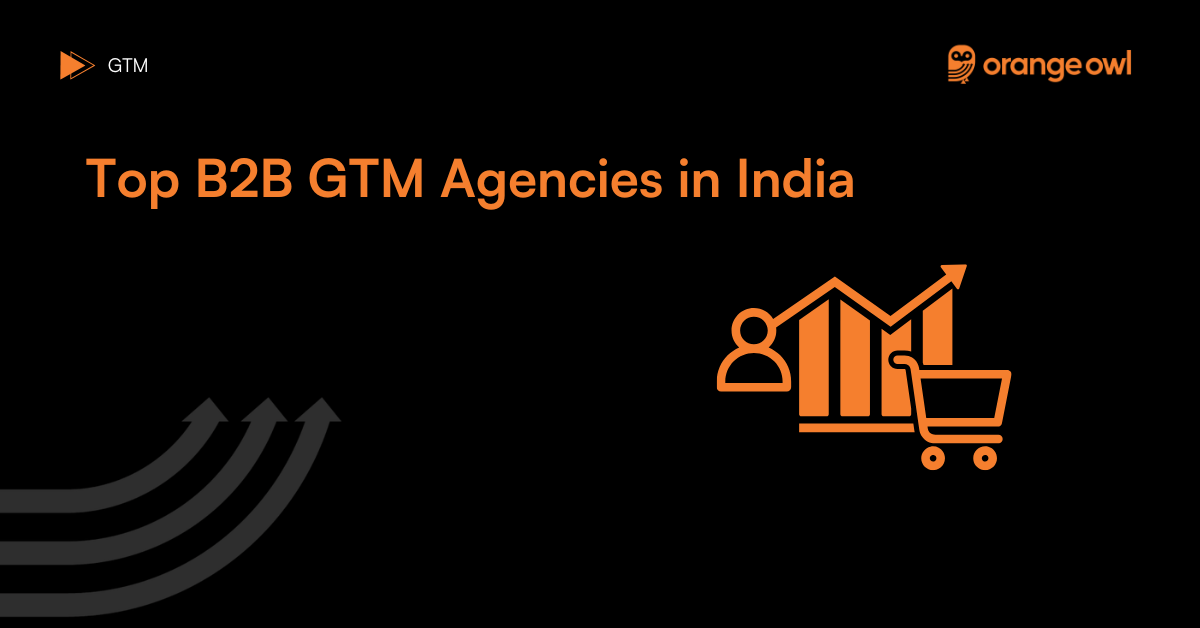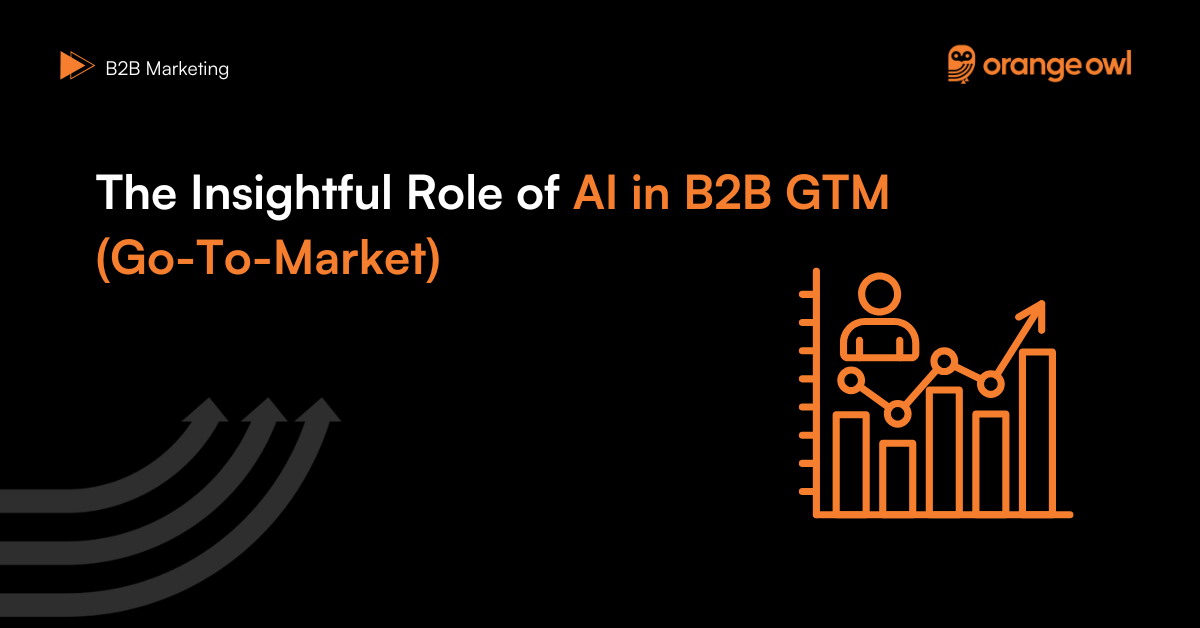Leveraging Social Media in Your GTM Strategy
Vivek Goel
February 1, 2025

Table of Contents
In today’s digital landscape, social media has become an indispensable tool for businesses, offering unparalleled opportunities to connect and engage with audiences effectively. Integrating social media in GTM Go-To-Market (GTM) strategy is essential for maximizing brand visibility, driving customer engagement, and ultimately, achieving business objectives. Let’s look at how it can take your GTM strategy to new heights.
Social media has transformed the way businesses interact with their audience, providing a platform for real-time communication, content distribution, and community building. In the context of GTM strategy, social media serves as a powerful tool to enhance brand awareness, engage with target audiences, drive traffic and conversions, and gather valuable customer insights and feedback.
Understanding the Role of Social Media in GTM

- Enhancing Brand Awareness: Social media platforms serve as digital storefronts, allowing businesses to showcase their brand identity, values, and offerings to a global audience.
- Engaging with Target Audiences: Through social media, businesses can foster meaningful interactions with their audience, responding to queries, addressing concerns, and building relationships that drive loyalty and advocacy.
- Driving Traffic and Conversions: Social media serves as a gateway to your digital assets, directing traffic to your website, landing pages, and product pages, ultimately driving conversions and sales.
- Gathering Customer Insights and Feedback: Media platforms provide valuable insights into customer preferences, behaviors, and sentiments, enabling businesses to refine their GTM strategy based on real-time data.
Key Platforms for B2B and B2C
- LinkedIn: Known as the professional networking platform, LinkedIn is ideal for B2B engagement, thought leadership, and lead generation.
- Twitter: With its real-time updates and conversational nature, Twitter is effective for customer interaction, brand monitoring, and trend spotting.
- Facebook: As the largest social media platform, Facebook offers opportunities for community building, targeted advertising, and customer engagement for both B2B and B2C businesses.
- Instagram: Leveraging visual storytelling, Instagram is perfect for showcasing brand personality, product showcases, and influencer collaborations.
- YouTube: With its dominance in video content, YouTube is ideal for sharing product demos, tutorials, and customer testimonials, enhancing brand credibility and engagement.
Developing a Social Media Strategy for GTM
- Setting Clear Goals and Objectives: Define specific objectives for your social media efforts, aligning them with your overall GTM strategy to ensure consistency and focus.
- Identifying Target Audience and Buyer Personas: Understand the demographics, interests, and pain points of your target audience, tailoring your content and messaging to resonate with their needs.
- Creating a Content Calendar: Develop a content calendar outlining the types of content to share, posting frequency, and key dates or events relevant to your industry or audience.
- Choosing the Right Platforms for Your Audience: Select media platforms that align with your target audience’s preferences and behaviors, ensuring maximum reach and engagement.
Content Creation and Distribution
- Types of Content to Share: Experiment with different content formats such as articles, infographics, videos, and user-generated content to keep your audience engaged and entertained.
- Best Practices for Creating Engaging and Shareable Content: Focus on storytelling, authenticity, and value creation, addressing your audience’s pain points and interests while maintaining brand consistency.
- Utilizing User-Generated Content and Testimonials: Encourage your audience to create and share content related to your brand, leveraging user-generated content and testimonials to build trust and credibility.
- Scheduling and Consistency in Posting: Establish a consistent posting schedule to maintain visibility and engagement, utilizing media management tools to schedule posts in advance and monitor performance.
Social Media Advertising
- Benefits of Paid Campaigns: Paid campaigns offer targeted reach, precise audience segmentation, and measurable ROI, complementing organic efforts and driving specific business objectives.
- Setting Up Targeted Ads: Utilize advanced targeting options to deliver personalized messages to specific demographics, interests, and behaviors, optimizing ad creatives and formats for maximum effectiveness.
- A/B Testing Ad Creatives and Formats: Experiment with different ad creatives, messaging, and formats through A/B testing to identify the most effective combinations that drive engagement and conversions.
- Analyzing Ad Performance and ROI: Monitor key metrics such as impressions, clicks, conversions, and cost per acquisition to evaluate the performance of your social media ads and optimize campaigns for maximum ROI.
Engaging with Your Audience
- Responding to Comments and Messages: Actively engage with your audience by responding to comments, messages, and inquiries in a timely and personalized manner, fostering a sense of community and trust.
- Building a Community and Fostering Relationships: Create opportunities for interaction and engagement through live events, Q&A sessions, polls, and contests, building a loyal and engaged community around your brand.
- Hosting Live Events and Q&A Sessions: Leverage live video features on social media platforms to host interactive events, share behind-the-scenes content, and answer questions from your audience in real-time.
- Leveraging Influencers and Brand Advocates: Collaborate with influencers and brand advocates in your industry to extend your reach, build credibility, and amplify your message to a wider audience.
Measuring Success and Iterating
- Key Metrics to Track: Monitor key performance indicators (KPIs) such as engagement rate, reach, conversions, and return on investment (ROI) to evaluate the effectiveness of your social media efforts.
- Using Analytics Tools: Utilize analytics tools such as Facebook Insights, Twitter Analytics, and LinkedIn Analytics to track performance metrics, gather insights, and make data-driven decisions.
- Gathering Feedback and Adjusting Strategy Accordingly: Solicit feedback from your audience through surveys, polls, and comments, and use this information to refine your social media strategy and optimize content for better results.
- Continuous Improvement and Staying Updated with Trends: Stay abreast of the latest social media trends, algorithm changes, and best practices, adapting your strategy accordingly to maintain relevance and effectiveness in an ever-evolving landscape.
Conclusion
Incorporating social media into your B2B GTM strategy is imperative for maximizing brand visibility, engaging with target audiences, and driving business growth in today’s digital age. By understanding its role, developing a strategic approach, creating compelling content, leveraging advertising opportunities, engaging with your audience, measuring success, and learning from industry examples, you can effectively leverage social media to elevate your GTM strategy and achieve your business objectives.
Embrace the power of social media and let it propel your key components of GTM strategy to gain a competitive advantage. Start leveraging now to strengthen your brand presence, foster customer relationships, and drive sustainable business growth.

Frequently Asked Questions About Social Media in GTM Strategy
Social media allows you to connect with your target audience, enhance brand visibility, drive engagement, gather customer insights, and ultimately achieve your business objectives in today’s digital landscape.
LinkedIn is ideal for B2B engagement, thought leadership, and lead generation, while Twitter is effective for real-time customer interaction and trend spotting. Facebook, Instagram, and YouTube also offer opportunities for community building, content distribution, and engagement.
Start by setting clear goals and objectives for your social media efforts, identifying your target audience and buyer personas, creating a content calendar, choosing the right platforms, and implementing best practices for content creation, distribution, and engagement.
Monitor key performance indicators (KPIs) such as engagement rate, reach, conversions, and return on investment (ROI). Utilize social media analytics tools to track performance metrics, gather insights, and make data-driven decisions.
Paid social media campaigns offer targeted reach, precise audience segmentation, and measurable ROI, complementing organic efforts and driving specific business objectives. Consider setting up targeted ads, conducting A/B testing, and analyzing ad performance to optimize your campaigns.
Actively respond to comments and messages in a timely and personalized manner, foster a sense of community and trust, create opportunities for interaction through live events and Q&A sessions, and leverage influencers and brand advocates to extend your reach and credibility.
Common challenges include maintaining consistency in posting, keeping up with algorithm changes and trends, managing negative feedback or crises, and measuring the true impact of social media efforts on business outcomes.


